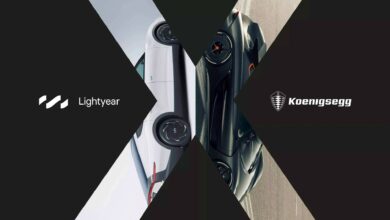
The acceleration figures from 0 to 100 km/h of some electric cars are beginning to enter the terrain forbidden to hypercars. With the thermal motors, it was not at all easy to obtain impressive figures from 0 to 100 km/h, 3 seconds or less, but with the delivery of torque from the electric motors, things change. The differences appear more from 0 to 200 km/h, or from 100 to 200 km/h, but they are fewer commercial records.
Christian von Koenigsegg, responsible for the brand that bears his surname, spoke about it on the Top Gear Magazine podcast. The manufacturer is working on an electric hypercar that will have heart-stopping performance, but models like the Tesla Model S Plaid or the Porsche Taycan Turbo are there in numbers (at least in a straight line).
Traditionally, in the most radical sports cars, just 20 kg can make a big difference. Koenigsegg said that in electric cars 20kg less can help, but doesn’t make much of a difference: “It’s hard to do, and you should do it if you can, but that’s only 10% of what I think should be different”, referring to more street models.
For Koenigsegg, hypercars now need more justifications for their mere existence, since their prices are astronomical and not everything is a matter of exclusivity. If they do not stand out so much in performance, they will have to contribute something else. For example, the sound is no longer such a differential issue as when talking about cars with an internal combustion engine.

Koenigsegg did not reveal how they are going to do it. A similar dilemma has been found by other engineers and designers trying to achieve greater differentiation, for example, what will a muscle car for Dodge look like when only electric motors are used. In any case, at a dynamic level, a hypercar increases its differences from a very powerful streetcar when it enters the circuit or is driven in a spirited way. That is not illustrated by a figure from 0 to 100 km/h.
This figure also says nothing about what happens when benefits are required for longer than a couple of accelerations. Several high-power electric models experience limitations when their batteries or electrical system start to heat up, or the brakes start to struggle. That’s where the shots can go, one thing is to run in a straight line, and another thing is to maintain the effort when many curves come. That is the land of hypercars.
Speaking of top speed, on the other hand, breaking the 300-mile-per-hour (482 km/h) barrier is in the cards, but Koenigsegg said “it’s scary. ” Already above 400 km/h it is a huge challenge to have enough downforce to keep the car from flying, the tires not to shred in minutes, and the driver to easily maintain control.
